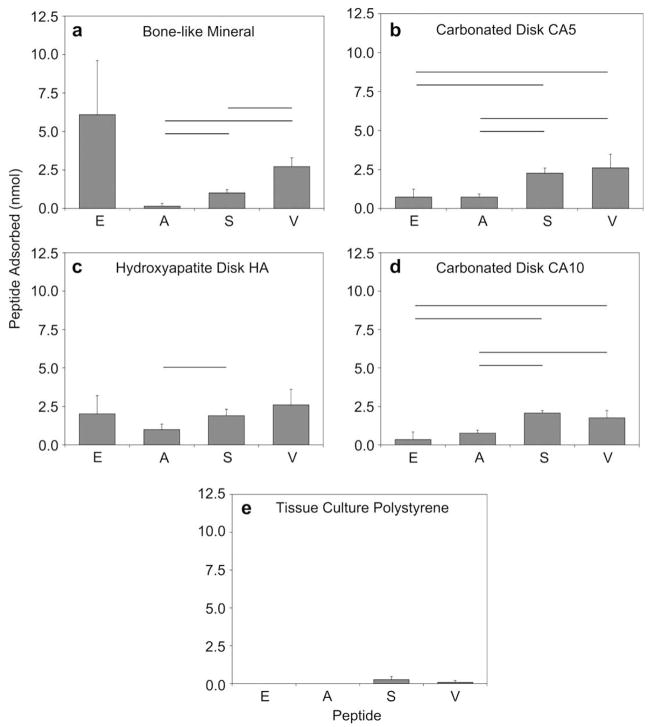Fig. 4.
Adsorption of peptides EEEEEEEPRGDT [E], APWHLSSQYSRT [A], STLPIPHEFSRE [S], and VTKHLNQISQSY [V] on (a) bone-like mineral (BLM), (b) sintered disks from 5.6% carbonated apatite powder (CA5), (c) sintered disks from hydroxyapatite powder (HA), (d) sintered disks from 10.5% carbonated apatite powder (CA10), and (e) tissue culture polystyrene (TCPS). Peptides S and V showed significantly increased adherence to all apatite-based materials in comparison to A (for S vs. A, BLM p = 0.001, CA5 p < 0.001, CA10 p < 0.001, HA p = 0.038; for V vs. A, BLM p = 0.006, CA5 p = 0.033, CA10 p = 0.029), and to both carbonated disks CA5 and CA10 in comparison to E (for S vs. E, CA5 p = 0.005, CA10 p = 0.004; for V vs. E, CA5 p = 0.026, CA10 p = 0.010). Differences between S and V were also only seen on bone-like mineral, p = 0.006. These results suggest that peptide adsorption is not only dependent on substrate composition, but also on the peptide composition. Horizontal bars denote statistical differences.

